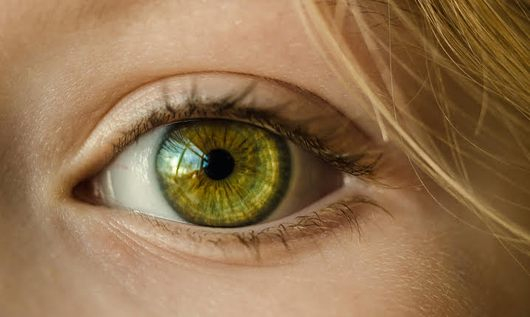性發育障礙冷知識(一)——先天性腎上腺皮質增生症

更新日期:2020年7月24日
99.98%的人類身體可以清楚分為男或女。[1] 只要第23對染色體為XX,就自然會有子官、卵巢、陰核、大小陰唇等女性性器官,出生時看性器官就知道是女性。但是XX染色體者會因某些原因,性器官的外形發展成介乎男和女之間,這狀況就是「性別不明」。
罕見中的常見:CAH
數十年來醫生對於診治性別不明的方法一直眾說紛紜,性學家甚至認為性別不明就證明了第三種性別的存在,既非男,又非女,稱為雙性人(intersex)。直至2006年一群英美兒科醫學專家就性別不明發表學術聲明,為種種造成性別不明的病症分類。[2] 為了患者的最佳利益,包括心理健康和社交發展,兒科專家為各種不同病因建議最恰當的診斷和治療,又把各種性別不明的狀況歸納為性發育障礙(Disorders of Sex Development),簡稱DSD。[3]
先天性腎上腺皮質增生症(Congenital Adrenal Hyperplasia),簡稱CAH,是最常見的性發育障礙。[4] 假如你是教師,每年緊密接觸約100個學生,在35年教學生涯裡,你將約有兩成半機會遇到一位患有CAH的學生。根據歐盟定義,罕有病是每10,000人中少於五個個案。參考國際雙性人組織所引用的文獻,每10萬個活產嬰兒才有七個確診CAH。所以,雖說CAH是最常見的性發育障礙,但其實也是相當罕見。[5]
過多男性激素的女胎
在進一步認識CAH前,不妨先了解男性的陰莖和陰囊是如何形成的冷知識。
決定男性性別的Y染色體會在胚胎首三個月內令睪丸分泌睪丸素(testosterone),部份睪丸素會變身成為另一隻激素刺激外生殖器成長。原為女性的陰核會慢慢發展成為陰莖,原為女性的大小陰唇會慢慢形成陰囊,而睪丸會等到胎兒快出生前幾週才沉降至陰囊。
然而,不論男女,腎上腺素均能夠製造低量的睪丸素,所以女胎體內亦有少量睪丸素。[6]
CAH——先天性腎上腺皮質增生症——令女胎身體累積過多睪丸素。[7] 在子宮裡的女嬰,受著比一般女嬰多幾倍的睪丸素所影響,原應為陰核的部份因而發大,朝陰莖狀發展。大小陰唇則朝陰囊狀發展而稍為閉合。但患者的的睪丸素濃度未及男性,令到性器官呈現為介乎男和女之間。此外,CAH會造成嚴重脫水和失鹽,威脅幼兒生命。故此,許多地方會為新生嬰兒進行篩查,如香港「夏約書孤兒症基金會」支持的新生兒代謝病篩查計劃。
有些人長大到青春期或以後才發現患有CAH。過去曾有學者把這種晚發CAH(late-onset CAH)算進雙性人之列。[8] 晚發CAH有低機率令女性的陰核輕微發大,但並非性別不明。因此醫生區分CAH與晚發CAH時,不會視後者為性發育障礙或雙性。[9]
23個患有CAH的香港人
截至2014年香港威爾斯親王醫院的醫護團隊曾診治23位CAH女性,並且進行首個跨越亞洲CAH女患者的追蹤研究,橫跨20年。[10] 跨專科醫生團隊參照國際認可的做法,[11] 會盡量在患者年紀尚輕時取得父母同意,從而進行陰核和陰道等矯形。因為嬰兒的組織復原快,又可減輕疾病對家人的煎熬和傷害。到了青春期的患者月事正常、可懷孕,甚至有兩位女士已剖腹產下健康的子女。
大量男性激素不單影響生殖器形態,亦會影響大腦的性別形態,使性心理發展(psychosexual development)更趨向男性化。[12] 上述本港的追蹤研究與外地的研究都有類似發現:
“…[A] tendency to more masculine behavior traits within this cohort of women was a persistent observation by clinical staff… a more boyish or masculine behaviour pattern was apparent in our cohort. ”[13]
儘管如此,大多數CAH患者仍以女性自居,而且由於內生殖器健全,患者的生育能力沒受大影響。[14] 因此,兒科專家在上述聲明肯定患者的女性身份:
“Evidence supports the current recommendation to raise markedly virilized 46,XX infants with CAH as female.”[15]
“…[A]t this stage it is reasonable to state that the most patients with XX CAH should be assigned the female gender.”[16]
支援CAH患者
由篩查、發現、診斷,到治療及之後數十年的心理和生理保健,CAH患者需要跨醫療專科的醫護團隊照料和跟進。按病症嚴重程度、家人認知等,處理方案分別可以很大。家屬與醫護團隊的坦誠溝通是最為重要的。一般人對於這種極罕有病症的認知很少,患者與家屬都可能因為疾病跟性別、性器官有關,在文化上有忌諱,會感到孤立無援,不被親朋諒解。病人家屬互助小組、婦科醫護與及心理社會發展支持等,都是CAH女童在成長裡不能被忽視的。[17] 提升市民大眾認知難免要花力氣,盼望社會大眾對CAH有正確認知,減低誤解與污名。
(原文於2018年1月11日刊於本社網站,其後曾作修訂。)
[1] Leonard Sax, “How Common is Intersex? A response to Anne Fausto-Sterling,” The Journal of Sex Research 39, no. 3 (Aug 2002): 174–178, https://doi.org/10.1080/00224490209552139.
[2] Peter A. Lee et al., “Consensus Statement on Management of Intersex Disorders,” Pediatrics 118, no. 2 (August 2006): e488–e500, https://doi.org/10.1542/peds.2006-0738.
[3] Rodrigo L.P. Romao et al., “Update on the Management of Disorders of Sex Development,” Pediatric Clinics of North America 59, no. 4 (August 2012): 853–869, https://doi.org/10.1016/j.pcl.2012.05.020.
[4] Romao et al., “Update on the Management of Disorders of Sex Development,” 865; Georgette Beatriz De Paula et al., “408 Cases of Genital Ambiguity Followed by Single Multidisciplinary Team during 23 Years: Etiologic Diagnosis and Sex of Rearing,” International Journal of Endocrinology 2016 (November 2016), https://www.hindawi.com/journals/ije/2016/4963574/.
[5] Melanie Blackless et al., “How Sexually Dimorphic are we? Review and Synthesis,” American Journal of Human Biology 12, no. 2 (March 2000): 159.
[6] Melissa Hines et al., “Early androgen exposure and human gender development,” Biology of Sex Differences 6 (February 2015), http://doi.org/10.1186/s13293-015-0022-1.
[7] Romao et al., “Update on the Management of Disorders of Sex Development,” 868.
[8] Melanie Blackless et al., “How Sexually Dimorphic are we? Review and Synthesis,” 154–161.
[9] Leonard Sax, “How Common is Intersex? A response to Anne Fausto-Sterling,” 176.
[10] C H Houben et al., “Reconstructive surgery for females with congenital adrenal hyperplasia due to 21-hydroxylase deficiency: a review from the Prince of Wales Hospital,” Hong Kong Medical Journal 20, no. 6 (December 2014): 481–485, https://doi.org/10.12809/hkmj144227.
[11] Houben et al., “Reconstructive surgery for females with congenital adrenal hyperplasia due to 21-hydroxylase deficiency: a review from the Prince of Wales Hospital,” 484.
[12] Greta A. Mathews et al., “Personality and congenital adrenal hyperplasia: Possible effects of prenatal androgen exposure.” Hormones and Behavior 55, no. 2 (February 2009): 285–291, https://doi.org/10.1016/j.yhbeh.2008.11.007.
[13] Houben et al., “Reconstructive surgery for females with congenital adrenal hyperplasia due to 21-hydroxylase deficiency: a review from the Prince of Wales Hospital,” 483–484.
[14] Rodrigo Romao et al., “Patterns of Presentation, Diagnosis and Gender Assignment in a Canadian Multidisciplinary Clinic of Disorders of Sex Development (DSD),” Canadian Urological Association Journal 5, no. 3-S1 (June 2011), http://www.cuaj.ca/index.php/journal/article/view/1285/1074.
[15] Lee et al., “Consensus Statement on Management of Intersex Disorders,” e491.
[16] Romao et al., “Update on the Management of Disorders of Sex Development,” 859.
[17] Romao et al., “Update on the Management of Disorders of Sex Development,” 866.

